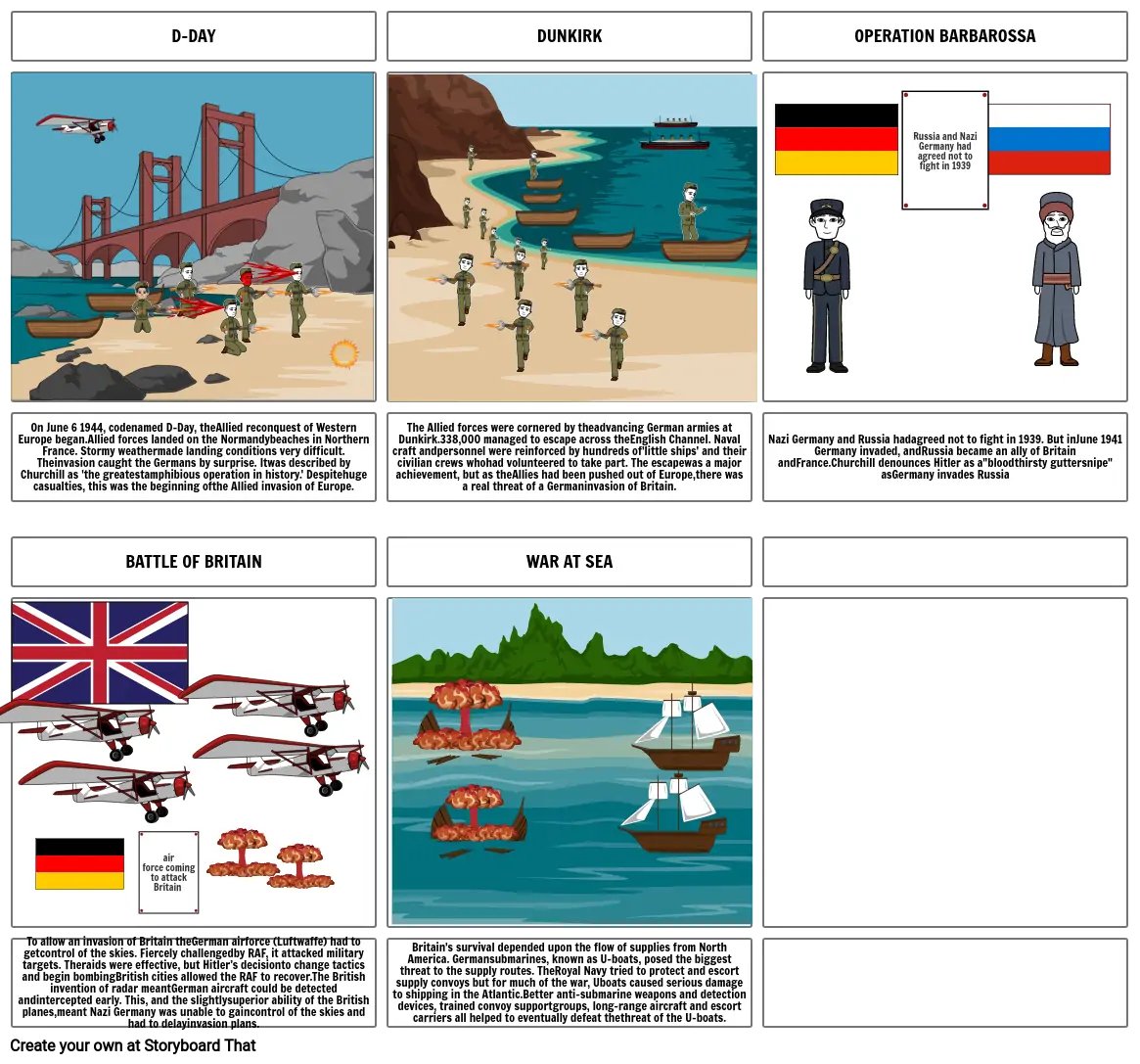D-day story board

Storyboard Text
- D-DAY
- DUNKIRK
- OPERATION BARBAROSSA
- Russia and Nazi Germany had agreed not to fight in 1939
- On June 6 1944, codenamed D-Day, theAllied reconquest of Western Europe began.Allied forces landed on the Normandybeaches in Northern France. Stormy weathermade landing conditions very difficult. Theinvasion caught the Germans by surprise. Itwas described by Churchill as 'the greatestamphibious operation in history.' Despitehuge casualties, this was the beginning ofthe Allied invasion of Europe.
- BATTLE OF BRITAIN
- The Allied forces were cornered by theadvancing German armies at Dunkirk.338,000 managed to escape across theEnglish Channel. Naval craft andpersonnel were reinforced by hundreds of'little ships' and their civilian crews whohad volunteered to take part. The escapewas a major achievement, but as theAllies had been pushed out of Europe,there was a real threat of a Germaninvasion of Britain.
- WAR AT SEA
- Nazi Germany and Russia hadagreed not to fight in 1939. But inJune 1941 Germany invaded, andRussia became an ally of Britain andFrance.Churchill denounces Hitler as a"bloodthirsty guttersnipe" asGermany invades Russia
- To allow an invasion of Britain theGerman airforce (Luftwaffe) had to getcontrol of the skies. Fiercely challengedby RAF, it attacked military targets. Theraids were effective, but Hitler’s decisionto change tactics and begin bombingBritish cities allowed the RAF to recover.The British invention of radar meantGerman aircraft could be detected andintercepted early. This, and the slightlysuperior ability of the British planes,meant Nazi Germany was unable to gaincontrol of the skies and had to delayinvasion plans.
- air force coming to attack Britain
- Britain's survival depended upon the flow of supplies from North America. Germansubmarines, known as U-boats, posed the biggest threat to the supply routes. TheRoyal Navy tried to protect and escort supply convoys but for much of the war, Uboats caused serious damage to shipping in the Atlantic.Better anti-submarine weapons and detection devices, trained convoy supportgroups, long-range aircraft and escort carriers all helped to eventually defeat thethreat of the U-boats.
Over 30 Million Storyboards Created

